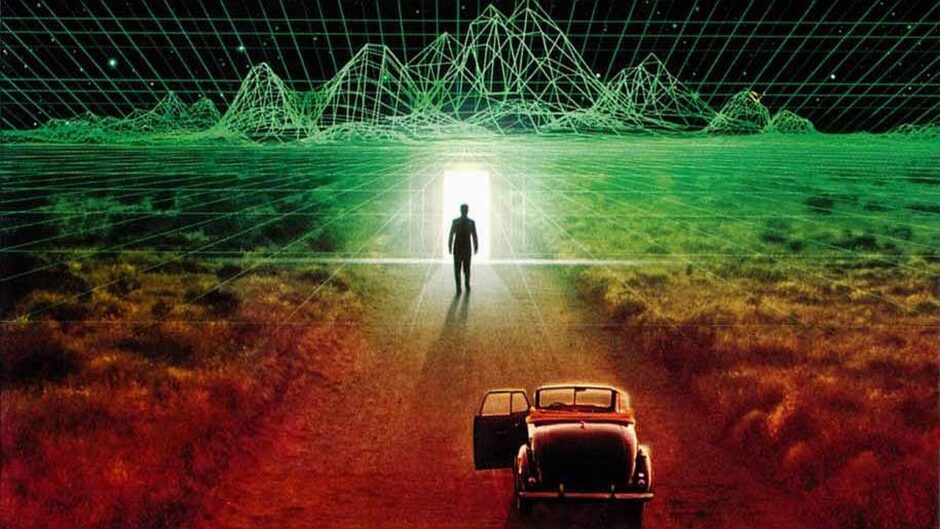Earlier in the week I did one of my favourite parts of Christmas — delivering Christmas gifts for my (Moxie’s) Wellington-based clients. While I was arranging my gaudily sequined Christmas hat as jauntily as I could and wondering whether I could still get away with this look, I had one of those incredible déjà vu moments as I remembered a ghost of myself from a Christmas past.
Thirty years ago, almost to the day, a lovely friend Daniella and I, resplendently festooned in Miss Christmas costumes, were hauling sacks of giant Christmas crackers around the streets of the City of London. We were delivering the contents of said sacks to commercial real estate agents and the crackers were a promotion to announce that the owners of one of the city’s newest tower blocks had decided to break down the floor space into smaller units for rent. Well, dear reader, what a buzz! Everyone was thoroughly into the festive spirit (some literally) and we turned heads, stopped traffic and generally had great banter with the people we passed. Lot of ‘you better be good for goodness sake’ sort of jive. It has to be said, the hats were coy, the skirts short, the heels high and the legs long. Of course, the clichéd red velvet and faux white ermine outfits had their own tacky but exotic allure. In these highly PC days donning we then this gay apparel might appear like the ultimate in objectification. Back then, we just saw it as a bit of harmless fun — it was for my business, no-one forced us and, in any case, we probably thought we looked ‘hot’ and enjoyed flaunting it. A whole topic for a different blog!
This cameo role was related to a business that I tried to help a friend’s son Ralph get off the ground. He’d already started it, but it wasn’t gaining traction beyond his immediate locale. We called it Absolutely Crackers!and the giant crackers for the city building were one of our biggest successes. In its short life span, Absolutely Crackers! really rocked the corporate promotions market — we made bespoke, weird and wonderful crackers for a range of iconic brands including Arsenal Football Club and top end chocolate manufacturer Charbonnel et Walker. Then there were the sumptuous crackers designed to match the splendour of art deco Pullman Carriages on the Venice Simplon Orient Express. Fillers for these were white silk evening scarves for men and exquisite hand-painted ones for women from VSOE’s merchandise range. For a city broker, crackers made from the Financial Times were the perfect accessory for their annual bash.
The jewel in our crown was creating the invitations to CBS Records (now Sony Music) Christmas party in 1988. I don’t recall how we got in front of CBS — might have been via my then husband who was involved in music sponsorship — but we put together a very ambitions proposal for they invites which they, somewhat amazingly, accepted. In retrospect, they probably went for it because we ludicrously under-priced the whole gig.
The theme for the party was ‘Old English’ and, let me tell you, these weren’t just any old crackers. No, no, no, these were masterpieces of ingenuity and engineering. What we proposed, and they ultimately got, were individually boxed crackers — we designed a sleek triangular box to make them easy to post or courier to the who’s who of the musical world that were on the invitation list. In keeping with the theme, the crackers themselves were made from a beautiful burgundy and gold paisley patterned paper and the gifts were boxed miniatures of Glen Fiddich. Nice touch we thought even though Glen Fiddich is clearly not English. Nor is it even that old, having been founded in 1886, but good luck getting boxed miniatures of mead! Anyway, CBS seemed to agree that the single malt met the spirit … hem hem … of the occasion.
So far so good. The glory of the piece was the invitation which was hand-written by a calligrapher using medieval ornamentation on the lettering and then reproduced on parchment style paper. Most sane people would simply have rolled the invite up inside the cracker. Not us! No, we figured that to be authentic, they needed something else. So the invite was rolled, tied with red satin ribbon and then sealed using a custom designed CBS seal and traditional red sealing wax. The scroll this made was glued to the top of the cracker and the finished articles looked amazing.
And that’s where the wheels fell off. We had to assemble 350 of them. Anyone like to hazard a guess how long it takes to hand seal 350 parchment invitations? What calibre of satin ribbon can withstand the heat of the sealing wax being dripped onto it? No clue? We didn’t either. I can remember sitting at home at my kitchen table, the ceiling paint slowly blackening with the somewhat greasy smoke from the melting wax, my fingers progressively covering with Band Aids as the skin reddened and blistered, and the frustration grew as each ribbon sample melted down. I think we finished them off in the Board Room of my day job. (Happily I had a great boss who thought the whole cracker madness was great fun and might even have been the genius behind a device that got created to allow us to make about 10 ribbon seals simultaneously.) Anyway, the crackers were a huge hit even if we made no money out of them (on account of never having done anything like this before — has anyone? — and not being able to price them effectively). But hey, luminaries like Mick Jagger and George Michael got our crackers … and what price a few first degree burns between superstar friends!
But how did crackers get incorporaed into the Christmas lexicon in the first place? It’s not like Matthew’s Gospel told us of wise men bringing gold, frankinsense, myhrr … and … er … crackers. You can sort of understand where Christmas trees and all the Easter paraphanalia like eggs and bunnies got adapted from the pagan festivals the Christian ones replaced. But crackers were unashamedly commercial. Wikipedia (bless) tells the story of how one Tom Smith was first to market. He apparently created crackers as a development of his bon-bon sweets, which he sold in a twist of paper (the origins of the traditional sweet-wrapper). But the novelty wore off, sales of bon-bons slumped, and Smith sought new promotional ideas. Apparently, he added the “snap” when he heard the crackle of a log he had just put on a fire. The size of the paper wrapper had to be increased to incorporate the banger mechanism, and the sweet itself was eventually dropped, to be replaced by trinkets. This new product was initially marketed as the Cosaque (i.e. Cossack), but quickly morphed into the onomatopoeic “cracker”. The other elements of the cracker we all know and (many of us) love —the gifts, paper hats and mottos — were all introduced by Walter Smith (Tom’s son) to differentiate their product from competitors who’d grasped the opportunity and got on the cracker bandwagon.
Back to Absolutely Crackers! Despite the genuine success of some of our promotions, the cracker empire never eventuated. Behemoth’s like Tom Smith still dominated the retail market and made it pretty much impossible for us to succeed. Without cracking (sorry couldn’t resist it) the retail market, relying on promotions was too random as they didn’t happen evenly during the year. Our vision was to make the cracker a ubiquitous part of the corporate party circuit, not just at Christmastime. Instead we coped with high stress peak times during October – December which, fun though they were … and they were … were also unsustainable. In any case, as with CBS, we didn’t really know how to price the jobs properly and lacked the confidence to just think of a big number and double it, then double it again, so we didn’t manage to build any reserves.
We did try quite hard to get into the ‘high end’ retailers like Harrods, Fortnum and Mason and Asprey but other independents peddling top of the line product, had got to them first. Asprey in particular offered eye-wateringly expensive crackers at around fifteen hundred quid for a dozen. Think gold plating and diamonds designed for wealthy Saudis! We didn’t have the working capital to really get stuck into this level of ostentation. In the end, we decided to throw in the towel and, with extreme regret, closed our little factory unit outside Hereford. I re-focused on my day job which likely pleased my long-suffering boss, and Ralph went off to study drama.
Despite this, I loved Christmas crackers long after Absolutely Crackers! went to the big Christmas party in the sky and have re-prised my cracker making skills for family and friends on many occasions over the years. To me, specially designed crackers are like icing on the cake of my table setting themes. I also found them to be a very personal and loving way of wrapping carefully chosen gifts. I guess my feelings about table settings and crackers were akin to the way others offer love through food. However, it’s increasingly hard not to be sickened by the overt consumerism of this time of the year. All the advertising for too many things we don’t need and there’s no place to hide behind the knowledge of the damage we consumers have wreaked on our environment.
Apparently there’s a memorial water fountain to Tom Smith and his family at Finsbury Square in London. Perhaps this is another monument that ought to be removed? Crackers may well be a beautiful augmentation of the Christmas table and add some fun to the moment. But it is only a moment and they are just another layer of landfill when it all comes down to it and we need more of that like we need to colonise Mars. Well actually, we probably will need to colonise Mars if we don’t stop creating landfill like crackers, but I’m sure you know what I mean. I’ve stopped making or buying them even if I have to psyche myself to step away from the tantalisingly presented boxed sets in stores and mourn the creative opportunity loss for my table decorations.
Having said all that, all that remains is to wish you a cracker of a Christmas and a very happy New Year full of peace, joy, hope and love.













